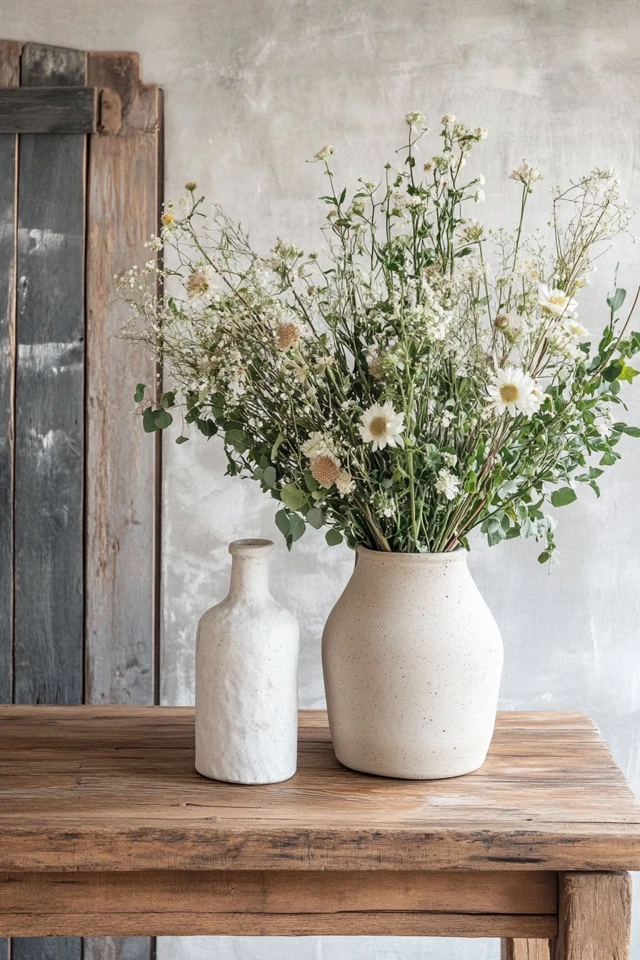Farmhouse design is beloved for its warmth, simplicity, and connection to nature, and natural materials are at the very core of this style. From reclaimed wood beams to stone fireplaces, incorporating organic textures and materials creates a grounded, timeless aesthetic that feels both inviting and authentic.
When I first began designing with farmhouse elements, I discovered the transformative power of natural materials. A simple swap to linen curtains and a wooden coffee table completely changed the energy of my space, adding warmth and a sense of connection to the outdoors.
In this guide, we’ll explore the role of natural materials in farmhouse design, why they’re so essential, and how to incorporate them into your home.
Why Natural Materials Are Key to Farmhouse Design
1. They Bring Warmth and Texture
Natural materials add depth and coziness to any room, making the space feel lived-in and welcoming.
2. They Connect You to Nature
Farmhouse design emphasizes harmony with the outdoors, and materials like wood, stone, and linen reinforce that connection.
3. They’re Durable and Timeless
Organic materials often age beautifully, adding character and longevity to your home.
1. Reclaimed Wood: The Heart of Farmhouse Style
Reclaimed wood is a cornerstone of farmhouse design, known for its rustic charm and environmental benefits.
- Uses: Incorporate reclaimed wood in furniture, beams, accent walls, or flooring.
- Benefits: It’s eco-friendly, adds warmth, and has a weathered patina that tells a story.
- Design Ideas: Use a reclaimed wood dining table or create a statement wall with salvaged planks.
Why It Works: The imperfections in reclaimed wood add authenticity and character to your space.
2. Stone: Timeless Strength and Beauty
Stone elements add an earthy, grounded feel to farmhouse interiors.
- Uses: Include stone in fireplaces, kitchen backsplashes, or accent walls.
- Materials: Choose natural stones like limestone, slate, or fieldstone for an organic look.
- Design Ideas: A stacked stone fireplace or a stone-tiled mudroom floor adds texture and visual interest.
Why It Works: Stone’s durability and timeless appeal make it a perfect match for farmhouse design.
3. Woven Textures: Softness and Warmth
Woven materials like rattan, wicker, and jute bring softness and an organic touch to farmhouse spaces.
- Uses: Incorporate woven baskets, rugs, or light fixtures.
- Benefits: These materials are lightweight, versatile, and add texture to any room.
- Design Ideas: Hang woven pendant lights over a dining table or use jute rugs to ground your seating area.
Why It Works: Woven textures contrast beautifully with harder surfaces like wood and stone, creating a balanced look.
4. Linen and Cotton: Airy and Comfortable
Natural fabrics like linen and cotton are staples in farmhouse design for their softness and breathability.
- Uses: Choose these materials for curtains, upholstery, bedding, and throw pillows.
- Benefits: They’re durable, easy to clean, and have a relaxed, lived-in feel.
- Design Ideas: Use linen slipcovers on sofas or hang light, billowy linen curtains for an airy vibe.
Why It Works: The simplicity of these fabrics complements the rustic charm of farmhouse décor.
5. Clay and Terracotta: Earthy Accents
Clay and terracotta bring warmth and a sense of history to farmhouse interiors.
- Uses: Incorporate terracotta pots, vases, or tiles in your design.
- Materials: Look for unglazed terracotta for a more authentic, rustic feel.
- Design Ideas: Line a windowsill with terracotta planters or use terracotta tiles for a backsplash or flooring.
Why It Works: These materials add an earthy, tactile element that enhances the farmhouse aesthetic.
6. Metal: Industrial Edge with Rustic Appeal
Metal accents like iron, copper, and galvanized steel add a hint of industrial style to farmhouse design.
- Uses: Include metal in light fixtures, hardware, or furniture.
- Design Ideas: Hang a wrought-iron chandelier in the dining room or add galvanized metal storage bins.
- Benefits: Metal adds contrast and durability while balancing softer natural materials.
Why It Works: The mix of metal and wood creates a perfect blend of rustic and modern farmhouse style.
7. Brick: Rustic and Timeless
Exposed brick adds depth and a sense of history to farmhouse interiors.
- Uses: Use brick for accent walls, fireplaces, or kitchen backsplashes.
- Design Ideas: A whitewashed brick wall creates a bright, airy feel, while natural brick adds warmth.
- Benefits: Brick is durable, low-maintenance, and versatile.
Why It Works: Its raw, imperfect texture aligns beautifully with the farmhouse aesthetic.
8. Glass: Light and Airy Elegance
Glass elements bring a sense of openness and lightness to farmhouse spaces.
- Uses: Incorporate glass in cabinet doors, light fixtures, or decorative jars.
- Design Ideas: Use mason jars as vases or hang glass pendant lights over a kitchen island.
- Benefits: Glass reflects light, enhancing the airy feel of farmhouse interiors.
Why It Works: Glass balances the heavier textures of wood and stone, adding a touch of elegance.
9. Natural Fiber Rugs: Grounding and Cozy
Natural fiber rugs like jute, sisal, or wool add texture and warmth underfoot.
- Uses: Place rugs in living rooms, dining areas, or bedrooms for comfort and style.
- Benefits: These rugs are durable, eco-friendly, and perfect for high-traffic areas.
- Design Ideas: Layer a jute rug under a Persian-style rug for a cozy, layered look.
Why It Works: Rugs tie the room together while adding softness to hard surfaces.
10. Wood Beams: Structural and Stylish
Exposed wood beams are a quintessential farmhouse feature that adds architectural interest.
- Uses: Incorporate beams in ceilings, doorways, or mantels.
- Design Ideas: Use reclaimed wood beams for a rustic, authentic look or lighter finishes for a modern twist.
- Benefits: Beams add texture and warmth while drawing the eye upward.
Why It Works: Wood beams create a sense of scale and add timeless character to any space.
Picture Gallery
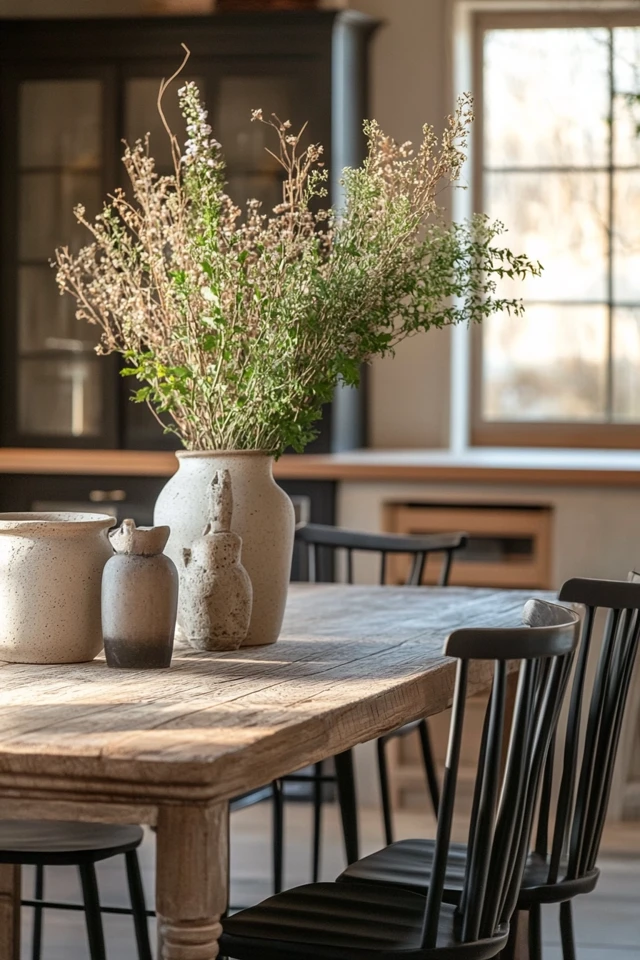
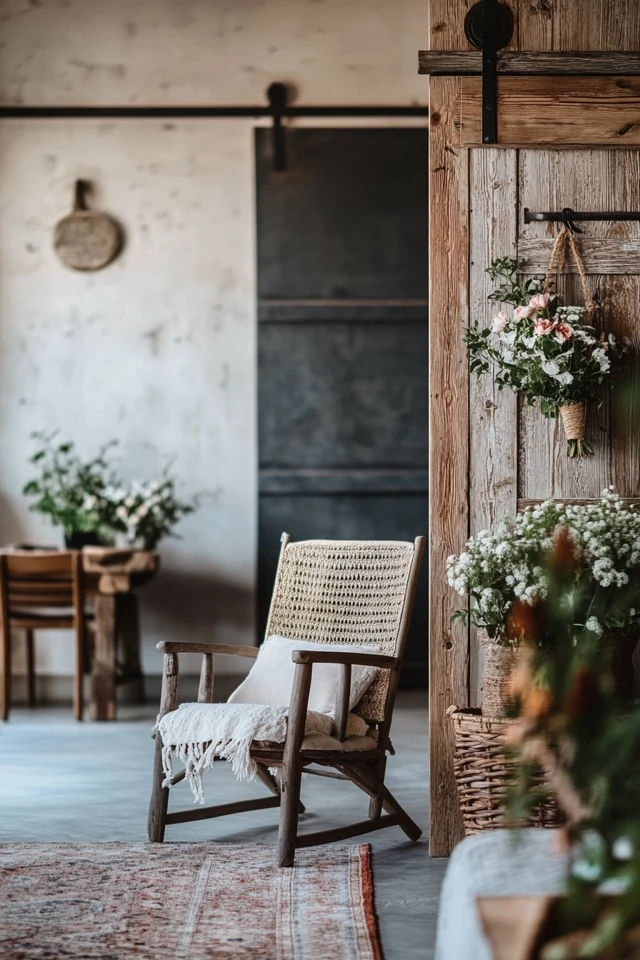
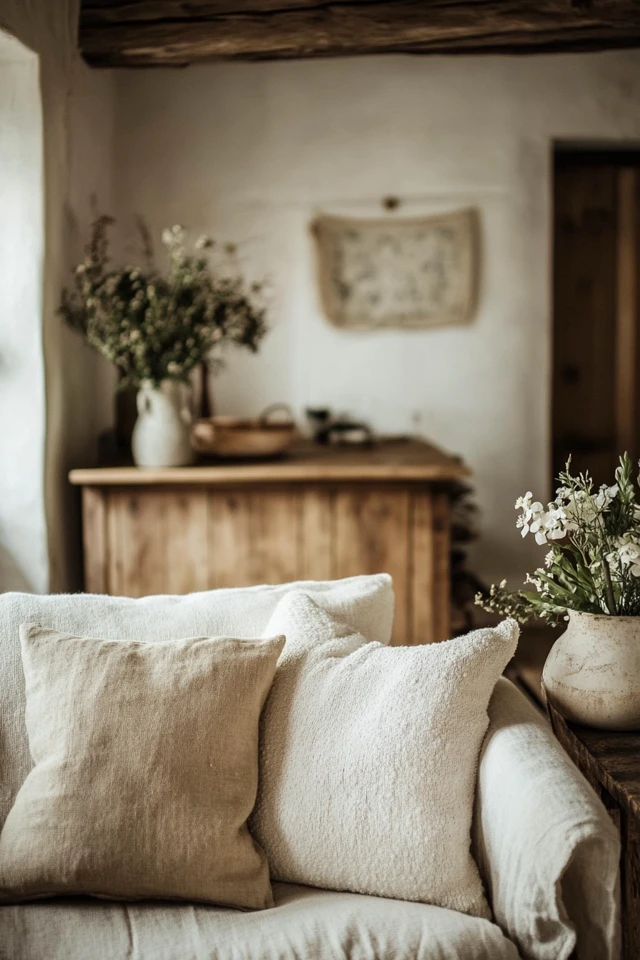
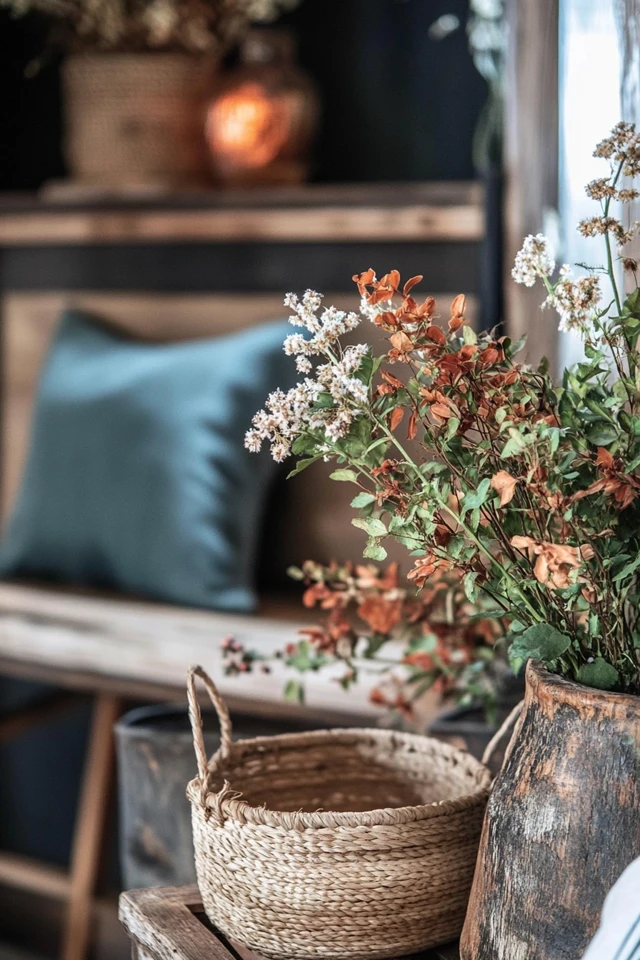
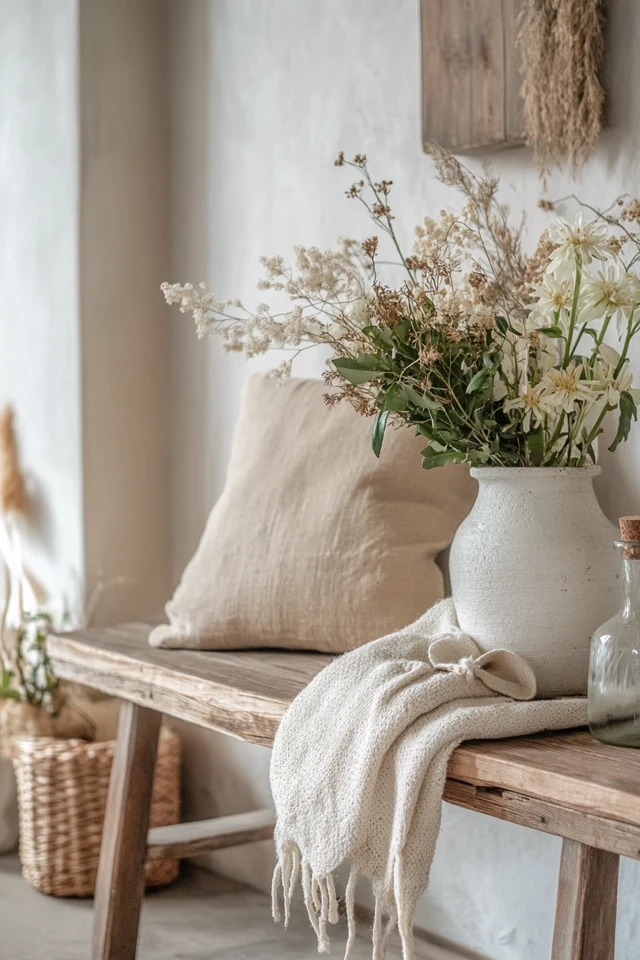
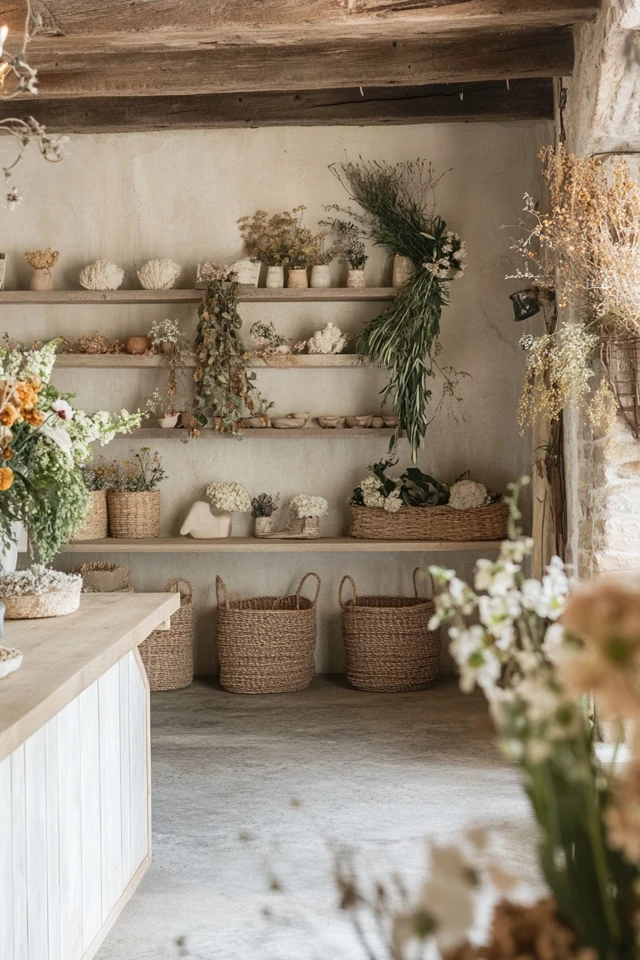
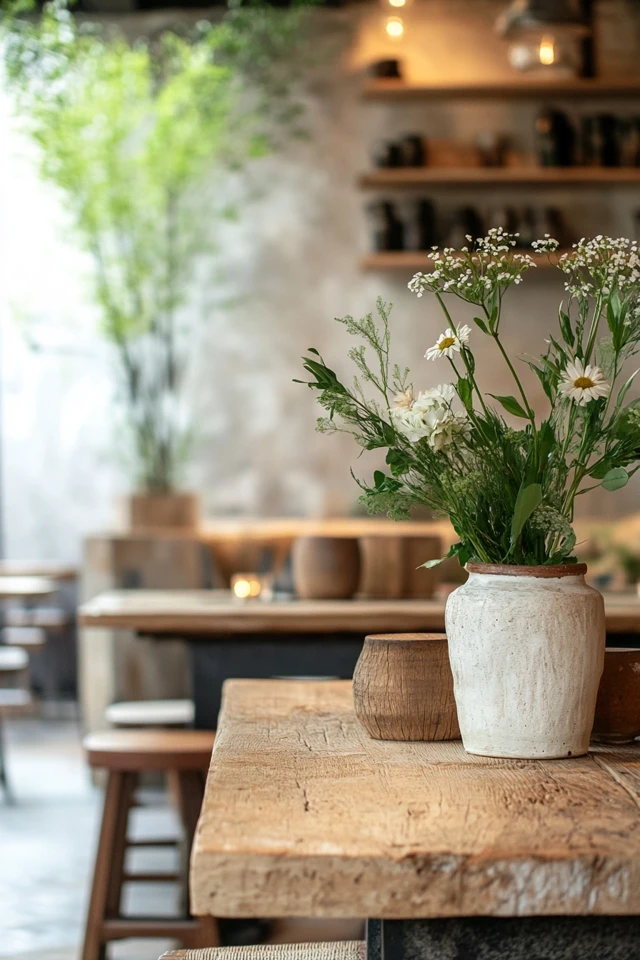
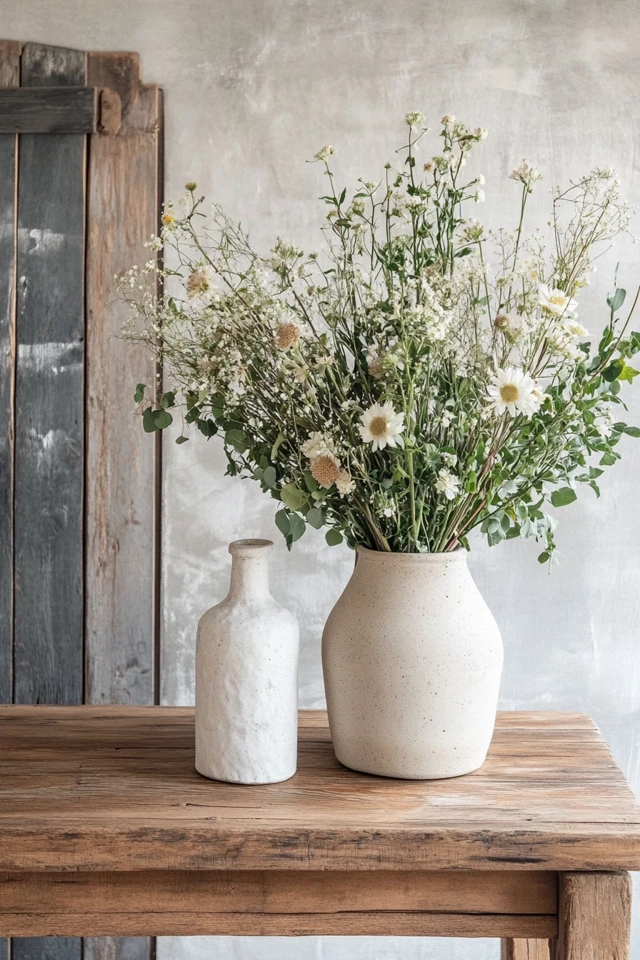
Tips for Incorporating Natural Materials
- Mix and Match: Combine wood, stone, metal, and fabric for a balanced, layered look.
- Let Imperfections Shine: Embrace the natural flaws in materials like wood and stone for authenticity.
- Start Small: If you’re new to farmhouse design, start with accents like a woven basket or linen pillows.
- Prioritize Quality: Choose high-quality natural materials that will age beautifully over time.
Conclusion
Natural materials are the foundation of farmhouse design, bringing warmth, texture, and authenticity to your home. Whether you’re incorporating reclaimed wood, stone accents, or soft linens, these elements create a timeless, inviting space that feels connected to nature.
By thoughtfully layering organic textures and materials, you can achieve a farmhouse look that’s both stylish and deeply comforting. So, whether you’re planning a full renovation or simply adding a few touches, let nature guide your design choices.
FAQs
1. What are the best natural materials for a farmhouse kitchen?
Reclaimed wood countertops, stone backsplashes, and metal light fixtures are excellent choices for a farmhouse kitchen.
2. Can I mix modern elements with natural materials in farmhouse design?
Absolutely! Combining sleek modern elements with rustic natural materials creates a modern farmhouse aesthetic.
3. How can I incorporate natural materials on a budget?
Start with small items like woven baskets, linen throw pillows, or terracotta planters to add farmhouse charm without overspending.
4. What’s the most durable natural material for flooring in a farmhouse home?
Stone and hardwood are both durable options that withstand heavy use and add rustic appeal.
5. How do I balance natural materials with color in farmhouse design?
Stick to a neutral color palette with pops of muted tones like sage green or dusty blue to complement the natural textures.

